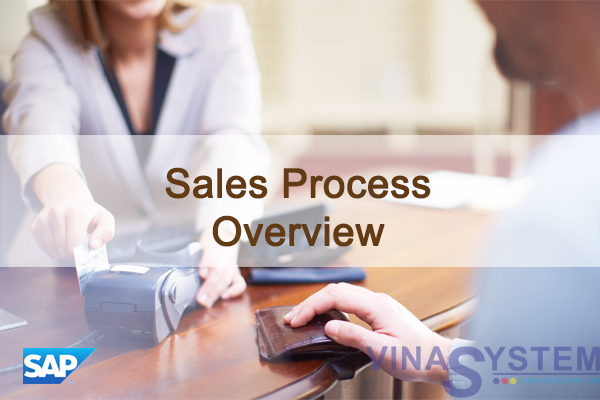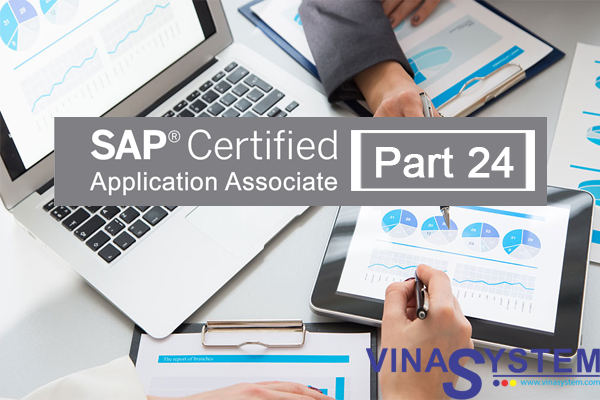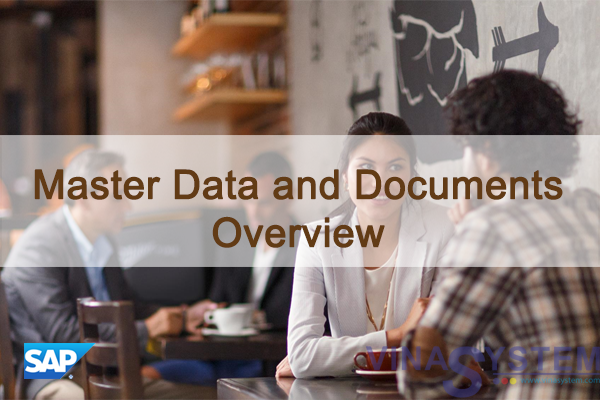
Tài liệu quy trình bán hàng trong SAP Business One - Sales Process
At the end of this topic, you will be able to:
- List the basic steps of the sales process
- Use a streamlined sales process
- Imagine that your company has set customer satisfaction as its top priority. You review the basic steps in the sales process and decide to use a streamlined process for rush orders to ensure that customer demands can be met as quickly as possible.
I/ Sales Process Overview

- The sales-A/R process moves from selling the goods (and services) to delivering those goods to invoicing the customer for their purchases, to the last step in accounting of receiving the incoming payment.
- Each step in the sales process involves a document, such as a sales order, delivery, or A/R invoice. SAP Business One efficiently moves all relevant information from one document to the next in the document flow. According to the business needs, you can choose which documents to include as your process steps. The only mandatory document in sales is the A/R invoice.
- Sales documents carry much of the same information throughout the sales process. This topic helps you recognize what is the same in each document so that you can quickly focus on just the information you need.
- Note that you also have the option to use a sales quotation to start the sales process. The sales quotation is not covered in this e-learning.
II/ Sales Item: Process Overview

The sales order is a commitment from a customer or lead to buy—at agreed-to quantities and price—a product or service from you.

The delivery indicates that the shipment of goods has occurred.

The A/R invoice is the only document that must be created in the sales process. It is the request for payment and records the revenue in the profit-and-loss statement.

The incoming payment receives the payment from the customer and clears the customer account. Internal reconciliation takes place automatically.
Incoming payments are done in the Banking module.
As part of a streamlined sales process, it is possible to post a payment while creating the invoice. To do this, you choose the payment means icon when you create an invoice and enter the payment amount. This will create an incoming payment due amount that is applied to the invoice you just created.
III/ Key Data:
1/ Business Partners
Business partners used in the sales process:
- Leads
- Customers
Every document in the sales process must have a business partner assigned. The business partners used in the sales process are leads and customers. A lead can easily convert to a customer.
A sales order can have either a lead or a customer assigned. Once you move to a delivery, you must have a customer.
Customer master data describes people and organizations to whom your company sells products and services. Customer master data records are used as the foundation for documents related to processing and fulfilling orders for customers and for the wizard for dunning customers.
2/ Item
Items represent products to be sold
Items can be for either goods or services
Item information is stored in the item master record
Besides the business partner, another key piece of data entered in the sales order is item data.
Items represent products to be sold: either goods or services.
Like customer master data, item information is stored in master data records.
Services you sell can also be set up as item master data records. If the services are defined as items, they can be entered into a sales order along with physical items. Alternatively, you can use the Item/Service type field to switch to a service type document where descriptions of services can be entered along with prices.
IV/ Using Price Lists

When you enter an item into a sales document, a price is automatically found. How does this work?
SAP Business One provides 10 default price lists. You then set up prices for each price list for your items. Of course, you do not have to use all ten price lists, but they are provided to you so that you can offer different prices to different groups of customers.
You assign a price list to each customer via default payment terms. Of course, the price list can be changed in the customer master.
When you enter the customer in a sales document, the assigned price list defaults to the sales document automatically.
The system will then use that price list to price the items in the order.
Of course, more complex pricing can be used such as special prices, discount groups, and pricing hierarchies. These are discussed in the e-learning topic for pricing.
Prices can also be changed in the sales order by authorized users. For example, a salesperson might give a 5% discount to a particular item or to a whole sales order.
V/ A/R Invoice

For our streamlined process, we will use just one document: the A/R invoice.
The A/R invoice is the only mandatory document in the sales process. The A/R invoice is designed to be an extremely efficient document for small businesses with just a few employees.
The A/R invoice can do the job of recording the customer’s order, kicking off the delivery, posting the goods issue and recording what the customer owes.

Saving an A/R invoice always triggers two postings: a debit to the customer account to show what is owed and a credit for sales revenue.
When an inventory item is sold on an A/R invoice that has no preceding documents, two additional postings are made. These are the postings for issuing the item from inventory that are usually handled by a delivery document in a perpetual inventory system: a debit to the cost of goods sold account and a credit to the stock account.
Of course, this graphic covers only the basic accounting transactions. There may be additional postings for tax or additional revenues and expenses.
VI/ Summary
Here are some key points:
- The main documents of the sales process are the sales order, delivery and A/R invoice. The incoming payment at the end of the sales process is performed in the Banking module.
- Every sales document must have a business partner assigned.
- A sales document can sell goods or services. Goods are represented by item master records. If services are represented as items, they can be sold with physical items on sales documents, otherwise they are sold on service-type documents.
- SAP Business One calculates pricing automatically in sales orders. Prices can be changed in sales documents by authorized users.
- The only mandatory sales document is the A/R invoice. When an A/R invoice is used alone without preceding documents, it can perform the functions of the sales order, delivery and the invoice.
- The A/R invoice is often used in a streamlined sales process.






